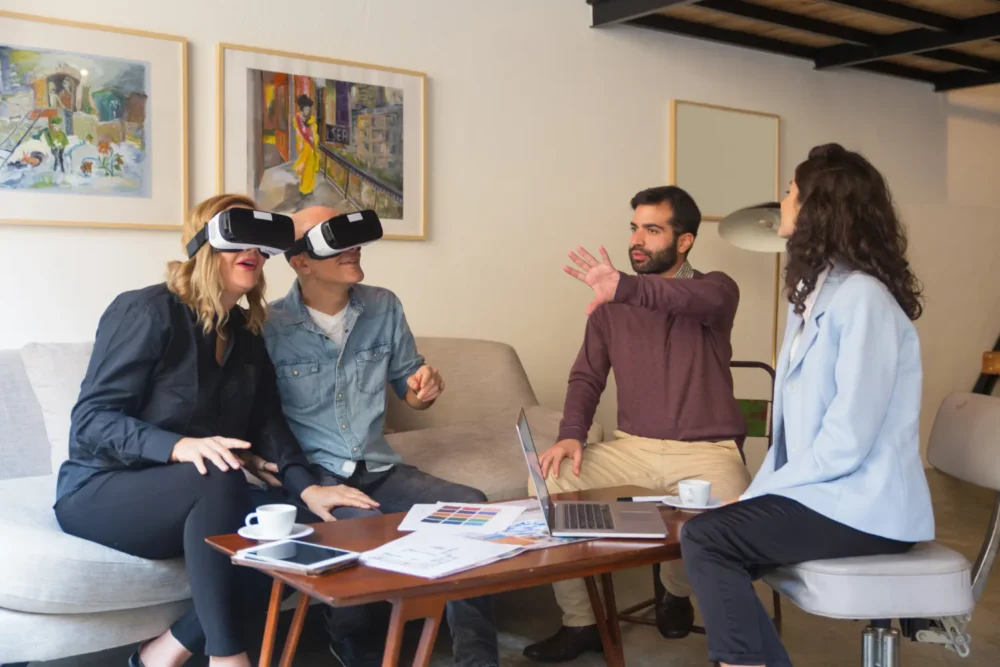Modern interior design takes a major turn away from basic appearance concerns towards creating environments that serve the health needs and comfort requirements of building occupants. Human-centred design represents today’s fundamental interior design principle because it puts people’s behaviours, needs, and preferences at the centre of design operations. The upcoming discussion will explain the important role of people-oriented design in modern home design, its effects on residential areas, and practical methods for implementing human-centred design in your living spaces.
The Shift Toward Human-Centered Design in Modern Interiors
Interior design largely depended on decorative trends, appearances, and practical needs prior to modern times. As people now allocate most of their time to home-based activities, telework emerges as a standard practice. At the same time, wellness needs become paramount, and the requirement for wellness-oriented spaces rapidly increases. The goal of human-centred design in interior spaces is to prioritise environment development, which aligns with occupant requirements for spaces that become practical, comfortable, and life-incorporating.
Designs from the present era have evolved beyond luxurious appearances into environments that evoke emotional responses while boosting productivity and maintaining physical health. The human-centred design philosophy constructs spaces for living rooms, offices, and bedrooms, which help inhabitants relax and become more creative while promoting total happiness.
Key Elements of Human-Centered Design
Comfort and Ergonomics
Human-centred interior design prioritises comfort alongside ergonomics as its fundamental element when creating spaces. Users can access their environments smoothly and without fatigue by choosing appropriate furnishings and layout designs that complement human physiological movement. By selecting comfortable seating, adjustable lighting, and specific textiles such as cushions and throws, the environment becomes welcoming for complete enjoyment.
Personalisation
All people maintain different taste standards, encompassing their decorative choices and material preferences.
Human-centred design works through personalisation as it brings homeowners’ specific tastes and preferences into all design decisions. Homeowners who invest in custom-made pieces along with personalised accessories and select decor, carefully develop stronger emotions toward their living spaces because the items have a direct relationship to their wants and needs.
Biophilic Design
The biophilic design accepts modern interior approaches to reach human-centred outcomes through the core principle of nature and building integration. The integration of natural elements, including plants with wooden textures and natural light, brings both visual enhancement and mood-supporting effects, along with improved air quality. Exposure to nature has proven beneficial in reducing stress while improving cognitive function and enhancing creativity, therefore becoming necessary for achieving a holistic home interior design.
Sustainability
When applying human-centred design methods, one must choose sustainable materials that follow environmentally friendly protocols. Advancements in sustainable furniture, coupled with low-toxic materials and design elements that have a lower environmental impact, have risen to noticeable importance. Environmental responsibility in interior space design delivers simultaneous advantages to people while helping the planet, since it allows you to contribute positively to a healthier Earth.
Texture in Modern Interiors: The Role of Tactile Sensory Experience
Modern interior design online heavily depends on texture because it affects the emotional atmosphere, comfort, and work effectiveness. The combination of soft materials, including velvet cushions, together with wool rugs, generates heat, while polished surfaces that contain glass and metal create minimalistic elegance. Open-plan areas become easier to navigate through the implementation of texture in modern interiors that differentiate lounging from dining to working sections for a coordinated ambience. Interior design methodology combines wood with marble or concrete elements to create a harmonious contrast between warmth and coolness, resulting in vibrant and welcoming environments.
Fusion Interior Design Ideas: Combining Aesthetics with Function
Fusion interior design ideas combine different cultural elements and historical styles to deliver a personalised space that serves both design aspirations and functional requirements.
Human-Centered Design Studio: Tailoring Spaces to Individual Needs
A design studio based on human needs undertakes space personalisation through client-centred preference and need analysis. All spaces that emerge from the studio consistently deliver functionality, as they are carefully designed to meet their intended purpose. Livable space designs can be viewed through virtual reality or 3d modelling technologies before they become real materials. The team effort ensures that complete options, including room setup and illumination choices, suit the needs of comfort and usefulness.
In Conclusion:
Modern interior design, incorporating human-centred principles, creates functional environments that serve both visual appeal and promote occupant well-being in the spaces.
Modern interior spaces serve as sanctuaries for occupants when designers combine comfort elements with personalised design solutions, sustainable practices, and innovative interior design methods.
Home is more than a space for residence; it requires a human-centred design system, which transforms it into an environment for thriving.
Working with a professional designer enables you to design spaces based on human-centred design, achieving interiors that match your lifestyle needs and vision. Contact De Lab for more information!
Read Our Other Blog: Discover the Hottest Interior Design Trends to Watch This Year.




